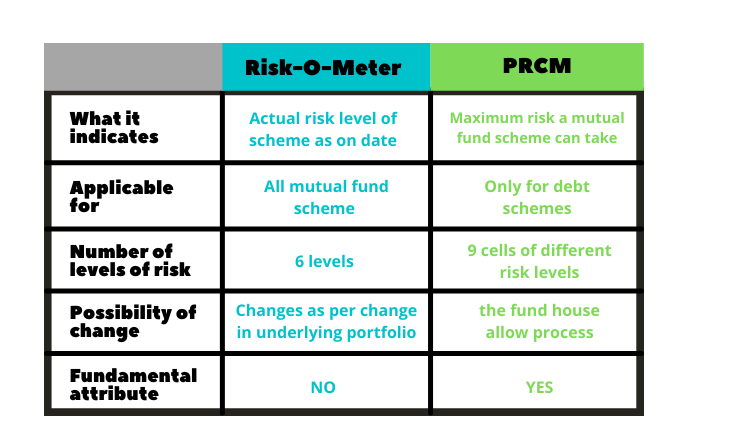Greetings To Readers!
Mutual fund investments are associated with certain risks, in fact, all the mutual fund's schemes are associated with certain risks, some with high risk while some with low risk. Risk in equity mutual funds was of much concern, but in debt funds, it was not!
However, the story of risk in debt funds changed after the Franklin Fiasco happened. Last year after the closure of six debt schemes by Franklin Templeton, SEBI issued guidelines to AMC’s, for assessing the risk in funds. The risk-o-meter (scale that discloses risk level in mutual fund scheme) parameter was revised by the market regulator.
In fact, this year, with the start of the month, AMC’s of debt funds were asked to define the boundaries within which they will limit the risks in their debt schemes.
Let us see how these risk parameters will help an investor understand the level of risk associated with their Debt schemes!
Levels Of Risk…
There are basically two scales used to define the risk level in a particular mutual fund scheme. These are risk-o-level meter and Potential Risk Class Matrix or PRCM. While the risk-o-meter measures the level of risk of all mutual fund schemes, the PRCM measures the level of risk of only debt fund schemes.
Both the approaches are rule-based and depend on the weightage of security in the portfolio and the risk attributes it carries. Below is an image that shows how risk-o-meter and PRCM are different from each other.

Factors Considered To Measure The Level Of Risk…
Securities in which Debt funds invest are associated with credit risk, liquidity risk, and interest rate risk. Each of the debt funds is accessed on these parameters and then is categorized in one of the six risk-o-meter indicators based on their weighted average in the portfolio.
For stocks help by debt funds, market capitalization, volatility, and impact costs are considered to assess the risk. For another holding of the debt scheme if any, like in gold, cash and cash equivalent and units of mutual funds and REIT, there are methods in risk-o-meter scales to evaluate the risk associated with these holdings.
If we talk about the PRCM method of evaluating risk, then this method is meant only for bond funds and uses interest rate risk measured by Macaulay duration and credit risk. After the risk level is analyzed, bond funds are placed in nine different cells starting from Class A1 (least credit risk and least interest rate risk) to Class C3 (relatively high credit risk and relatively low-interest rate risk).
Does The Risk Level Deviates In MF?
Well, yes, the risk level deviates in MF. A change in the credit rating of underlying bonds might result in a change in the risk-o-meter of the underlying portfolio of the scheme. In fact, if the fund manager takes an additional risk, in the bond funds, it is soon noticed and reflected by the risk-o-meter of the scheme.
While, in the PRCM method, a scheme placed in a cell has to pre-define the maximum risk it can take. The actual risk involved may even be less than what was depicted by the PRCM placement of the scheme.
Fundamental Attribute…
Risk-O-meter is a part of product labeling guidelines of SEBI for mutual fund schemes. Its value might keep changing and a fund house must keep their customers updated with any change in the risk category, either via email or by publishing on their website.
Any change in the PRCM cell is taken as a change in a fundamental attribute of the scheme that simply when occurs, the fund house allows load-free exit to investors after following the due process of filing the change with SEBI.
Lets Us Sum Up!
Although both risk-o-meter and PRCM methods are different from each other in different aspects, the work they perform that is offering more accurate information about the risk associated with mutual fund schemes to investors is similar in both. Both these two approaches help investors understand the level of risk associated with the funds and thus result in increased confidence of investors in mutual funds.
Keep reading our articles for more updates on finance and investment!!
For any kind of query you can contact us at Shri Ashutosh Securities Pvt Ltd., we are here to help you in any way possible.
Happy Investing!
(Mutual Fund investments are subject to market risk Illustrations are for example only, there is no guarantee of returns. Past performance is not an indicator/guarantee to future returns).